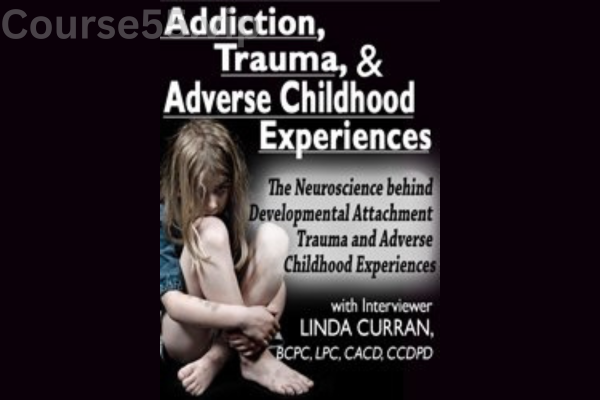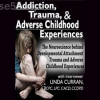Addiction, Trauma, & Adverse Childhood Experiences (ACEs):The Neuroscience behind Developmental/Attachment Trauma and Adverse Childhood Experiences By PESI
$199.00 Original price was: $199.00.$23.10Current price is: $23.10.
Understanding Addiction, Trauma, and Adverse Childhood Experiences (ACEs): The Neuroscience Behind Developmental and Attachment Trauma – Digital Download!

Addiction, Trauma, & Adverse Childhood Experiences (ACEs):The Neuroscience behind Developmental/Attachment Trauma and Adverse Childhood Experiences By PESI
Overview

Exploring Addiction, Trauma, and Adverse Childhood Experiences (ACEs): The Neuroscientific Basis of Developmental and Attachment Trauma
In modern psychological and neuroscientific research, the study of addiction, trauma, and adverse childhood experiences (ACEs) has gained considerable attention. Investigating how early traumatic experiences shape brain development and influence mental health provides insight into the long-term consequences of ACEs, including their connection to addiction. By understanding these intricate relationships, professionals can develop more effective strategies for intervention, treatment, and support for those impacted by early adversity.
The Lasting Effects of Adverse Childhood Experiences
Adverse Childhood Experiences encompass various stressful or traumatic situations that children may endure, such as abuse, neglect, and family dysfunction. Extensive research has demonstrated that ACEs can result in significant neurobiological changes, leading to what is commonly referred to as developmental trauma.
One of the most influential studies in this field—the ACE Study conducted by the Centers for Disease Control and Prevention (CDC) and Kaiser Permanente—identified a strong correlation between the number of ACEs a person experiences and their risk for physical and mental health struggles later in life.
Key findings from the ACE Study include:
• Even one ACE can have a profound impact on an individual’s overall well-being.
• Those with four or more ACEs are at significantly higher risk of depression, anxiety, and addiction-related behaviors.
• Addressing ACEs at both individual and community levels is critical, as their consequences persist well into adulthood.
How ACEs Alter Brain Development and Function
The impact of ACEs on brain function is complex, affecting multiple neurological pathways. Children exposed to early trauma often show heightened stress responses, primarily due to overactivation of the hypothalamic-pituitary-adrenal (HPA) axis. This results in increased cortisol levels, commonly known as the stress hormone. When the brain is subjected to prolonged cortisol exposure, structural and functional changes occur, particularly in areas responsible for emotional regulation, impulse control, and decision-making.
Neurological Changes Linked to ACEs
• Structural Alterations: Research has found that individuals with high ACE scores often exhibit reduced volume in the prefrontal cortex and amygdala. The prefrontal cortex governs decision-making and self-regulation, while the amygdala processes emotional responses. Chronic stress in childhood can impair these brain regions, leading to long-term emotional and behavioral difficulties.
• Emotional Dysregulation: Changes in neurobiology can also disrupt attachment and emotional processing, making it difficult for individuals to manage stress, build healthy relationships, and cope with adversity. Many turn to maladaptive coping strategies—such as substance use—as a means of emotional regulation.
• Addiction Susceptibility: Research suggests that individuals with early trauma histories are more likely to develop addiction-related behaviors due to dysregulation in the brain’s reward system. This link highlights the importance of addressing the underlying neurobiological factors of addiction rather than treating it as solely a behavioral issue.
Recognizing these neurological effects reinforces the need for trauma-informed treatment approaches that acknowledge how early experiences shape brain function and emotional health.
Why Trauma-Informed Care Is Essential
One of the most important takeaways from ACE research is the necessity of trauma-informed care—an approach that recognizes the widespread impact of trauma and adapts treatment strategies accordingly. This model shifts the focus from “What’s wrong with you?” to “What happened to you?”, promoting a more compassionate and effective approach to mental health care.
Core Principles of Trauma-Informed Care
• Safety: Establish a physically and emotionally secure environment.
• Trust and Transparency: Ensure open and honest communication in treatment settings.
• Peer Support: Encourage connections with individuals who have shared similar experiences.
• Collaboration: Engage individuals in their own treatment decisions.
• Empowerment: Focus on resilience and strengths rather than solely addressing deficits.
By integrating trauma-informed care into healthcare systems, professionals can more effectively address the long-term effects of ACEs and addiction, fostering healing and recovery.
Public Health Approaches to Addressing ACEs
The consequences of ACEs extend far beyond the individual, influencing broader public health policies and societal structures. Addressing these early life stressors requires systematic efforts aimed at both prevention and intervention.
Key Public Health Initiatives
• Raising Awareness: Educating communities about the impact of ACEs fosters greater understanding and empathy toward trauma-affected individuals.
• Early Intervention Programs: Identifying at-risk families and providing them with support services can help reduce the occurrence of ACEs.
• Improving Access to Mental Health Care: Expanding affordable and specialized trauma-focused mental health services can break the cycle of trauma and addiction.
• Community and School Involvement: Schools and local organizations play a vital role in building resilience and offering protective factors for children exposed to adversity.
As neuroscience continues to uncover the full extent of ACE-related impacts, public health policies must evolve to integrate trauma-informed frameworks that support healing and recovery on a societal level.
Conclusion
The connection between addiction, trauma, and adverse childhood experiences (ACEs) reveals a deeply ingrained biological and psychological interplay that influences an individual’s long-term well-being. Research highlights the profound effects of ACEs on brain development, emotional regulation, and addiction risk, underscoring the necessity of early intervention and trauma-informed care.
By fostering public awareness, implementing preventive strategies, and ensuring accessible treatment options, society can better address the widespread impact of childhood adversity. Supporting those affected by ACEs is not only essential for individual recovery—it is a critical step toward breaking the cycle of trauma and fostering resilience for future generations.
Frequently Asked Questions:
Business Model Innovation: We operate a group buying strategy, allowing participants to share costs and access popular courses at reduced prices. This model benefits individuals with limited financial resources, despite concerns from content creators about distribution methods.
Legal Considerations: The legality of our operations involves complex issues. Although we don’t have explicit permission from course creators to resell their content, there are no specific resale restrictions stated at the time of purchase. This ambiguity creates an opportunity for us to provide affordable educational resources.
Quality Control: We ensure that all course materials purchased are identical to those offered directly by the creators. However, it’s important to understand that we are not official providers. As such, our offerings do not include:
– Live coaching calls or sessions with the course author.
– Access to exclusive author-controlled groups or portals.
– Membership in private forums.
– Direct email support from the author or their team.
We aim to reduce the cost barrier in education by offering these courses independently, without the premium services available through official channels. We appreciate your understanding of our unique approach.
Be the first to review “Addiction, Trauma, & Adverse Childhood Experiences (ACEs):The Neuroscience behind Developmental/Attachment Trauma and Adverse Childhood Experiences By PESI” Cancel reply
You must be logged in to post a review.

















Reviews
There are no reviews yet.